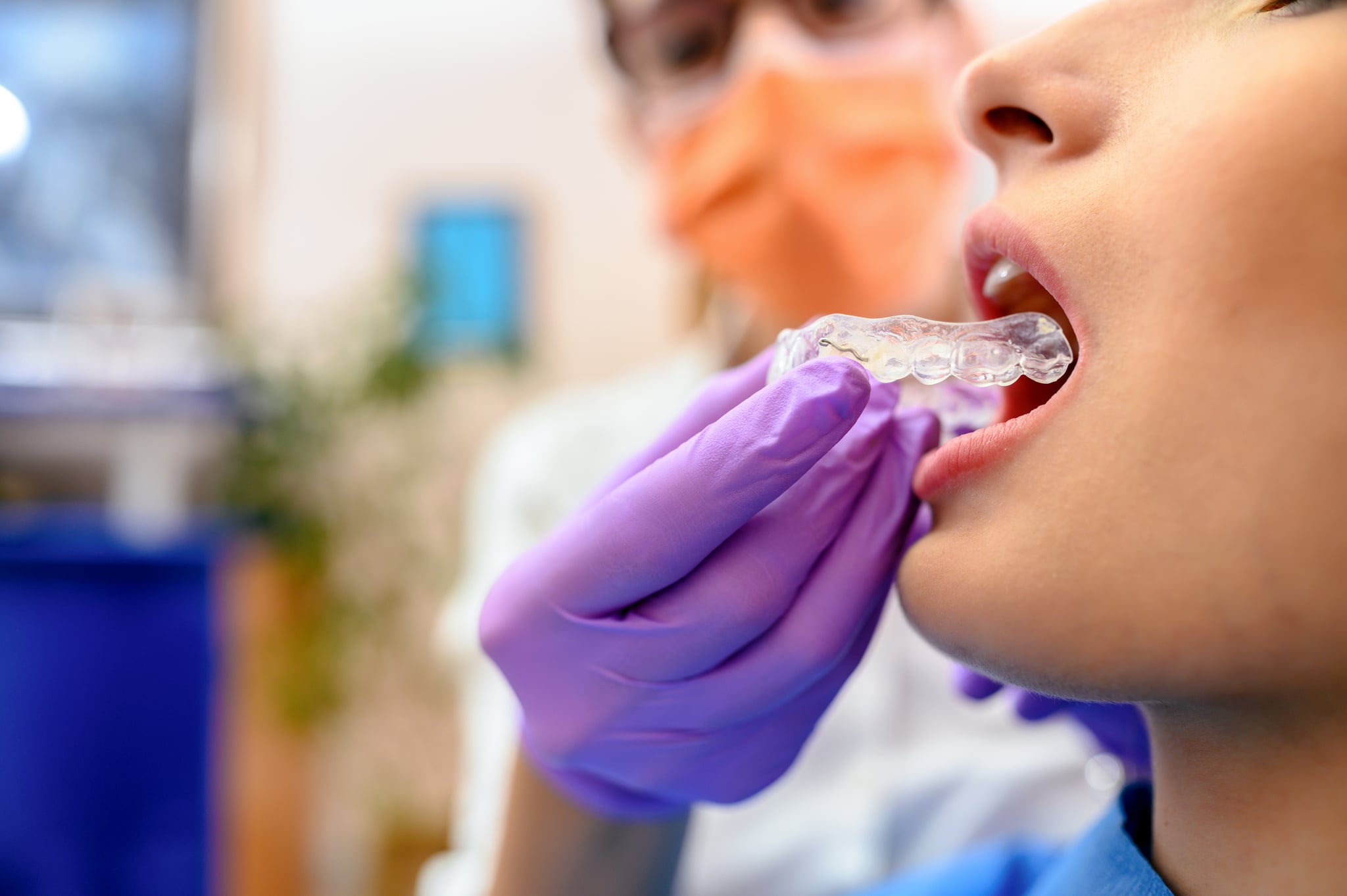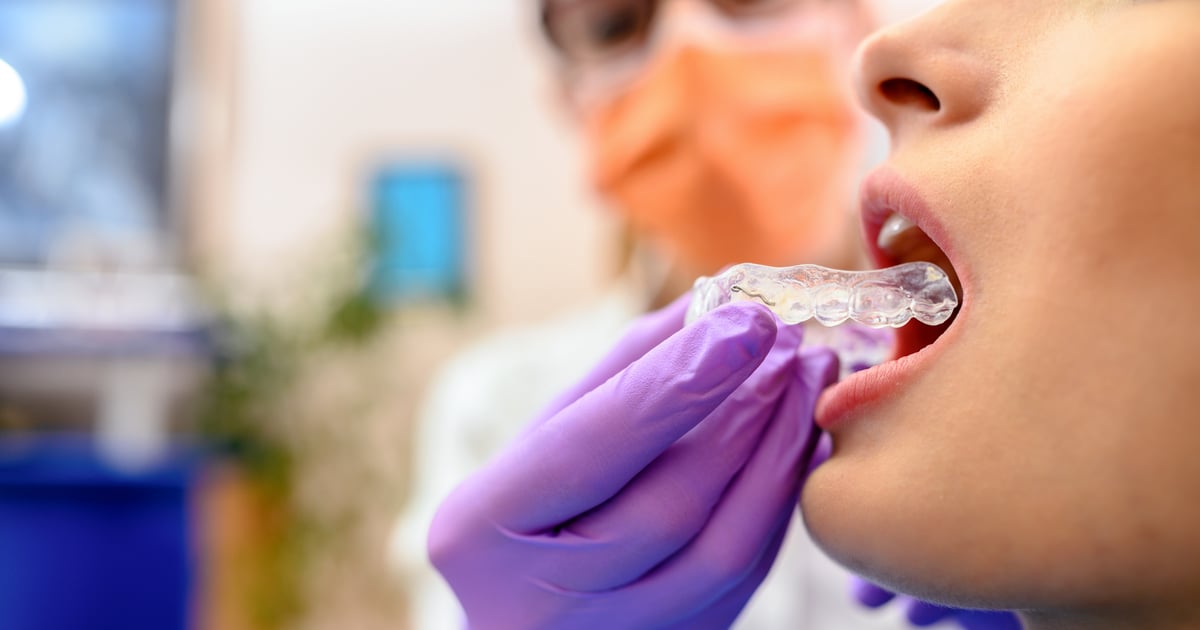
Metal braces fit with neon rubber bands (aka my middle-school vibe) aren’t the only teeth-straightening option nowadays. And as someone looking for a slightly subtler aligner, I’m thrilled. What’s hard is deciding between a mail-in retainer and an orthodontist-prescribed option.
To the untrained eye, mail-in aligners and orthodontic offerings seem similar, but cosmetic and restorative dentist Dr. Geoffrey R. Morris, DMD, said the two are actually very different.
Here’s what I’ve learned to be the three significant differences between mail-in and orthodontist-prescribed teeth aligners. But, you should know, I don’t plan on making my retainer choice alone. It’s so important to get a personalized and expert opinion from your dentist.
The Materials
“One of the main differences between mail-in aligners and those special ordered by your dental professional is the physical material the aligners are made out of,” Dr. Morris said.
Although these clear plastic aligners look the same, Dr. Morris noted that higher-end orthodontic aligners are generally made up of a proprietary material that contains “shape memory.” This material ensures the retainer doesn’t deform and keeps consistent pressure on the exact points needed to properly move the teeth.
On the other hand, mail-in aligners can bend and loosen — and even if mail-in companies wanted to make an aligner with similar properties to the “shape memory” models, many of the key components are currently protected under patents, he said.
The Process
Dr. Morris said successfully moving your teeth requires a proper diagnosis and planning strategy from a trained dental professional. The device used to straighten your teeth (traditional metal brackets or clear aligners) is just a tool to facilitate the process.
If you have a few tiny gaps or a couple of teeth that need to be minimally rotated, you may be a candidate for mail-in aligners — but still, it’s crucial to get approval from your dentist before taking the at-home approach, he added.
“I’ve had countless patients come into my office who need orthodontic aligners after spending a lot of money on the mail-in aligners because of lack of results or poor results. I’ve actually treated a few patients who have lost teeth in the process because they were not properly evaluated and diagnosed for gum disease and other dental issues before starting the aligner process.”
That’s why Dr. Morris stresses that the only guarantee of a quality outcome without any risk is to see a dental professional for proper fittings and monitoring.
The Prices
“The main benefit of mail-in aligners is they are often a cheaper alternative. That is because they are, in reality, a do-it-yourself kit.”
According to Dr. Morris, the company of your choice usually supplies you with an at-home kit to take your impressions, and the results are reviewed by a technician, who may or may not have had professional training. You may be paying more for professional aligners, but Dr. Morris said that often comes with a higher-quality product and the expertise of a highly trained professional who’s monitoring your progress.
Click here for more health and wellness stories, tips, and news.
